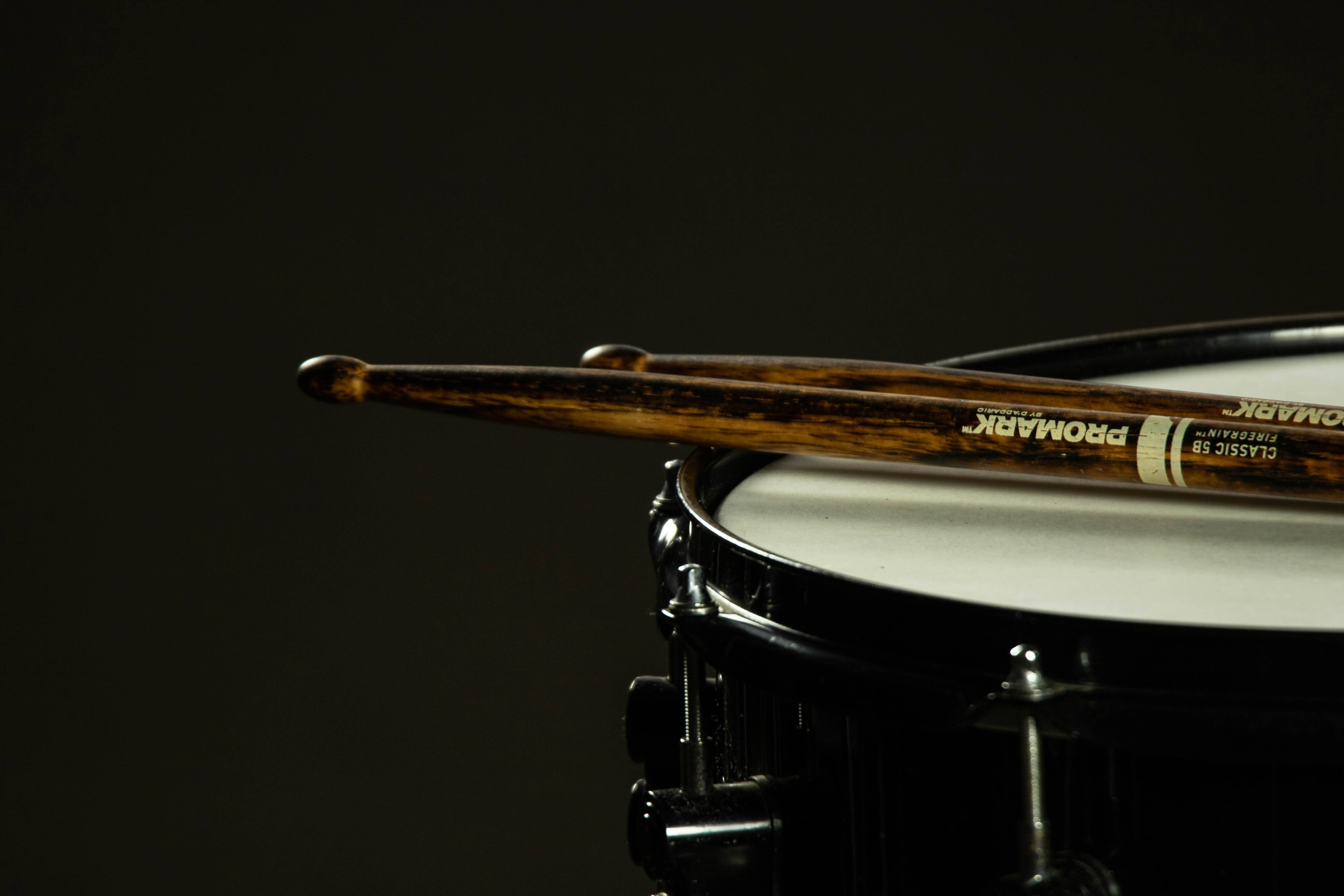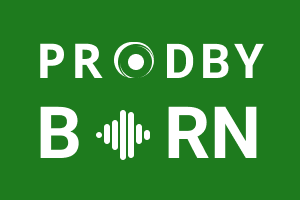Drum Programming and Sequencing
Drum programming and sequencing are vital skills if you want to create rhythmically compelling and engaging music. Drum programming involves creating and arranging drum patterns using virtual or electronic drum sounds. Sequencing refers to the process of arranging and organizing these drum patterns within a music production software or hardware sequencer. With drum programming and sequencing, you have precise control over the rhythm, timing, and overall feel of your drum tracks.
Drum Sounds and Elements
Understanding the different drum sounds and elements is crucial for effective drum programming and sequencing. The primary components of a drum kit include kick drum, snare drum, hi-hat, toms, cymbals, and various percussion instruments. Each drum sound has its unique sonic characteristics and role in shaping the overall groove and texture of the rhythm section.
Kick Drum
The kick drum, or bass drum, provides the low-end foundation of the rhythm. It typically has a deep and punchy sound and plays on the downbeats, emphasizing the strong beats of the musical measure. The kick drum is essential for establishing the rhythmic pulse and driving the energy of the track.
The kick drum plays a vital role in music production, serving as the rhythmic foundation and heartbeat of many genres. It's like the bass line in your body, the deep pulse that gets your head nodding and your feet tapping. Here's a breakdown of its key functions:
- Establishing tempo and rhythm: The kick drum anchors the entire song by setting the tempo and defining the basic rhythmic pulse. Whether it's a steady four-on-the-floor beat or a complex syncopated pattern, the kick drum provides the structure that other instruments and vocals fit around.
- Providing low-end power and punch: The kick drum fills the lower frequencies of the sonic spectrum, adding depth, power, and impact to the music. It creates a physical sensation, a visceral feeling that resonates with the listener.
- Driving the groove and creating dynamics: The kick drum plays a crucial role in creating the groove, the infectious sense of rhythm that makes you want to move. Its variations in timing, velocity, and sound contribute to the dynamic flow of the music, building tension and release.
- Enhancing other instruments: The kick drum interacts with and supports other instruments by filling the gaps in their frequency range. It creates space for bass lines, enhances the attack of other drums, and complements the low-end of guitars and synths.
- Shaping the emotional impact: The kick drum can evoke a wide range of emotions, from excitement and energy to suspense and darkness. Its sound, rhythm, and placement can subtly influence the overall mood and feeling of the music.
So the kick drum instrument would look like below:

And it produces sounds similar to the following:
In the context of music production, we have this kick drum groove:

And this kick groove would sound like:
Snare Drum
The snare drum is characterized by its sharp, crackling sound and is responsible for the backbeat—a strong accent on beats two and four of a musical measure. It adds a sense of groove and forward motion to the rhythm, often providing the syncopated or offbeat elements that make a drum pattern interesting.
In music production, the snare drum serves a distinct but equally important role alongside the kick drum. While the kick often provides the low-end foundation and steady pulse, the snare adds a layer of sharpness, attack, and rhythmic complexity. Here's a breakdown of its key functions:
- Accenting the beat and creating time signatures: The snare often lands on "2" and "4" in a 4/4 time signature, providing a clear accentuation that helps listeners perceive the beat structure. It can also play on off-beats and syncopated patterns, adding rhythmic complexity and creating distinct grooves.
- Cutting through the mix: Its bright, cutting sound allows the snare to easily pierce through the sonic spectrum, making it instantly recognizable and impactful. This characteristic helps drive the energy and excitement of the music.
- Providing dynamic variation: The snare can be played with diverse dynamics, from delicate ghost notes to powerful rimshots. This dynamic range allows producers to build tension and release within the groove, adding interest and excitement.
- Contributing to different musical styles: The snare plays a vital role in defining the feel and style of music. From the tight, crisp snares of funk and hip-hop to the looser, swinging snares of jazz and blues, the snare's sound and playing style contribute significantly to the genre's identity.
- Interacting with other instruments: The snare interacts with other instruments in the band or musical arrangement. Its tight attack can push other instruments forward, while its ghost notes can add subtle accents and rhythmic interplay.
So the snare drum instrument would look like below:
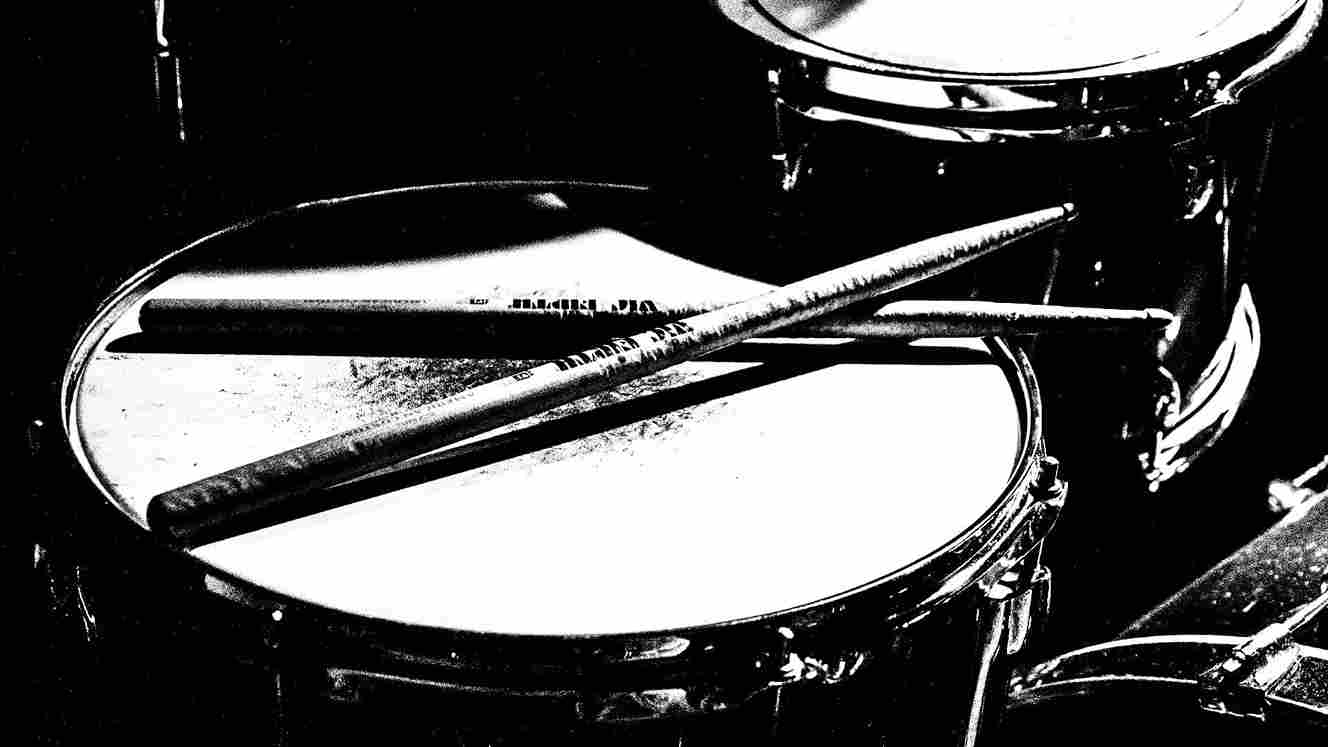
And it produces sounds similar to the following:
In the context of music production, we have this snare drum groove:

And this snare groove would sound like:
And a snare rim groove playing in the same pattern would sound like:
Overall, the snare drum in music production is more than just a timekeeper; it's a powerful tool for adding rhythmic complexity, dynamic variation, and sonic character, shaping the overall feel and energy of the music.
Hi-Hat
The hi-hat is a pair of cymbals controlled by a foot pedal. It produces a sustained sound when closed and a short, crisp sound when opened. The hi-hat plays a vital role in maintaining the rhythm and providing a continuous sense of motion. It can create various rhythmic patterns, from tight and consistent eighth-note or sixteenth-note patterns to more intricate and syncopated rhythms.
In the world of music production, the hi-hat takes center stage as a versatile rhythmic chameleon, offering much more than just a simple "chick" sound. Here's a breakdown of its key roles:
- Keeping Time and Building Groove: The hi-hat often plays closed notes on the off-beats (between the main kick and snare hits), establishing a steady pulse and giving the music a sense of forward momentum. This rhythmic foundation, combined with variations in velocity and patterns, contributes significantly to the "groove" - the infectious feeling that makes you want to move.
- Adding Texture and Color: The hi-hat's sound can range from the sharp "chick" of closed notes to the airy "swoosh" of open notes, providing a spectrum of tonal textures. This versatility allows producers to add subtle accents, create shimmering layers, or introduce rhythmic complexity depending on the desired sonic vibe.
- Creating Dynamic Contrast: By alternating between open and closed hi-hat patterns, producers can build tension and release within the groove. Closed hi-hats create a tighter, more focused sound, while open hi-hats provide an airier, more spacious feel. This dynamic interplay keeps the rhythm engaging and prevents it from becoming monotonous.
- Defining Genre and Style: The hi-hat plays a crucial role in shaping the genre and stylistic identity of music. Tightly closed hi-hats with consistent patterns characterize genres like funk and disco, while open, syncopated hi-hats contribute to the laid-back feel of jazz or reggae.
- Enhancing Other Instruments: The hi-hat interacts with other instruments, filling in sonic gaps and providing rhythmic support. Its crisp attack can push guitars and synths forward, while its subtle textures can complement the snare and kick drum.
So the hi-hat instrument would look like below:
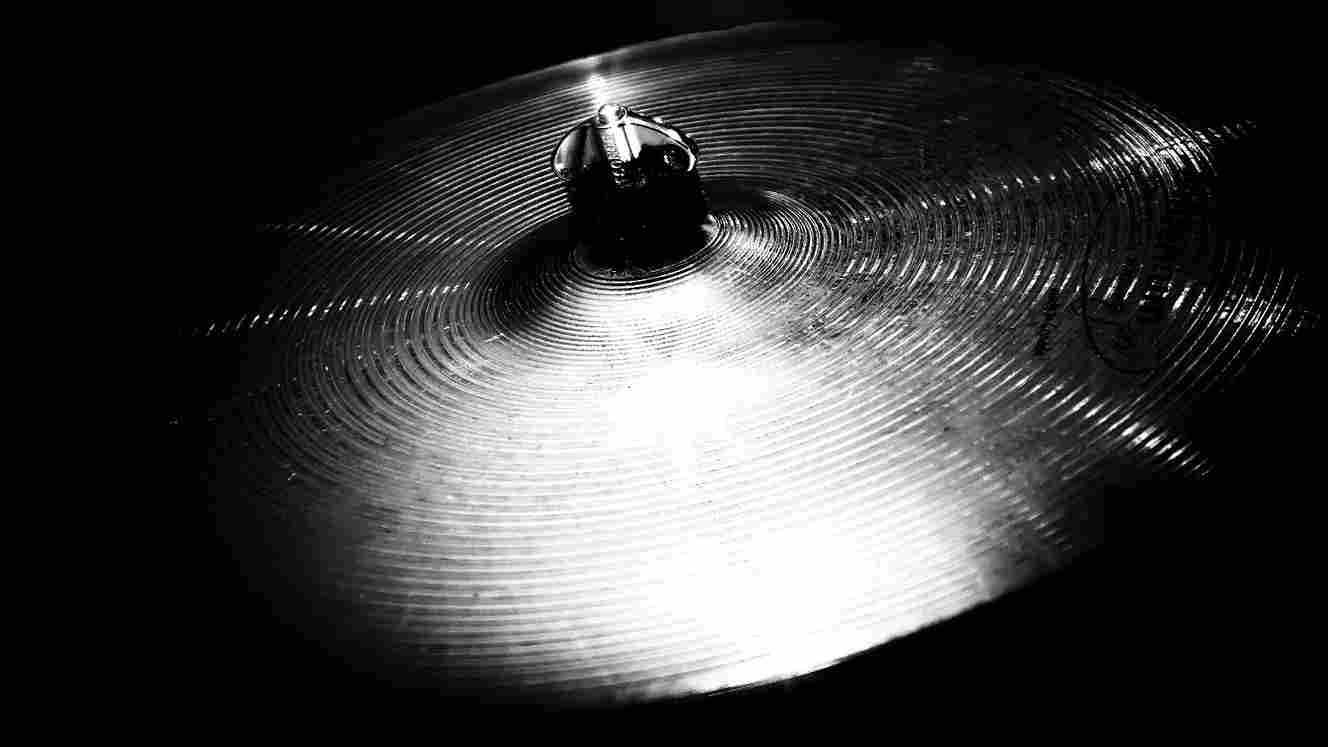
So for hi-hats we play them in two forms. The first form they take is when they are played when closed and the second form is when they are played when open.
So the close hi-hats would sound like:
And the open hi-hats would sound like:
In the context of music production, we have this closed hi-hat groove:

And this hi-hat groove would sound like:
And we also have this second hi-hat groove playing a two step pattern:
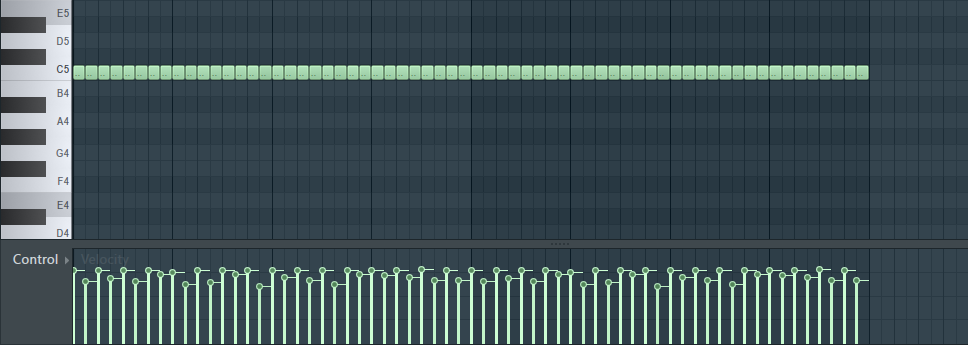
And the second hi-hat groove playing a two step pattern would sound like:
In conclusion, the hi-hat, though seemingly simple, is an essential tool in a music producer's arsenal. Its ability to keep time, add texture, create dynamic contrast, and define genre makes it a vital contributor to the rhythmic foundation and overall character of countless musical styles.
Percussions
Percussion instruments, such as congas, bongos, shakers, tambourines, and cowbells, add additional layers of rhythm and texture to the drum tracks. They can be used to create intricate patterns, add accents, or create a distinct rhythmic flavor to the overall groove.
In the vast world of music, percussions aren't just background noise or flashy accessories. They play a multifaceted, indispensable role, acting as the heartbeat, groove-maker, and color palette of countless musical styles. Whether it's the thunderous crash of a cymbal or the subtle rustle of a shaker, percussions can dramatically impact the rhythm, texture, dynamics, and emotion of a song. Lets delve into some of the functions of percussions.
Rhythm and Groove:
- Setting the pulse: From the steady thrum of congas in Latin music to the complex patterns of djembes in African rhythms, percussions lay down the foundational pulse that keeps the music moving.
- Building excitement and momentum: Strategic accents from cymbals, cowbells, and rim shots create crescendos and punctuations, propelling the song forward and keeping the listener engaged.
- Adding rhythmic complexity: Instruments like bongos, cajons, and frame drums weave intricate counterpoint lines and fills, enriching the rhythmic tapestry and preventing monotony.
Texture and Color:
- Broad sonic palette: Percussions boast a vast array of timbres and textures, from the sharp crack of a snare to the warm sustain of a woodblock. This diversity allows for layering and contrasting sounds, adding depth and dimension to the overall sonic landscape.
- Creating atmosphere and ambience: Subtle shakers, chimes, and bells can evoke specific moods and environments, transporting the listener to a beach, a rainforest, or a bustling marketplace.
- Highlighting melodic elements: Accented strikes on bells, glockenspiels, or claves can draw attention to specific melodic phrases or motifs, enhancing their impact.
Dynamics and Emotion:
- Building tension and release: Crashing cymbals and powerful drum rolls create moments of anticipation and impactful resolutions, adding drama and excitement to the music.
- Evoking diverse emotions: From the celebratory energy of fast tempos and bright cymbals to the contemplative stillness of muted drums and haunting gongs, percussions can touch on a wide range of emotional states.
- Adding storytelling potential: Skilled players use variations in dynamics, pitch, and rhythmic nuances to tell stories and connect with the listener on an emotional level.
So a percussion instrument would look like below:
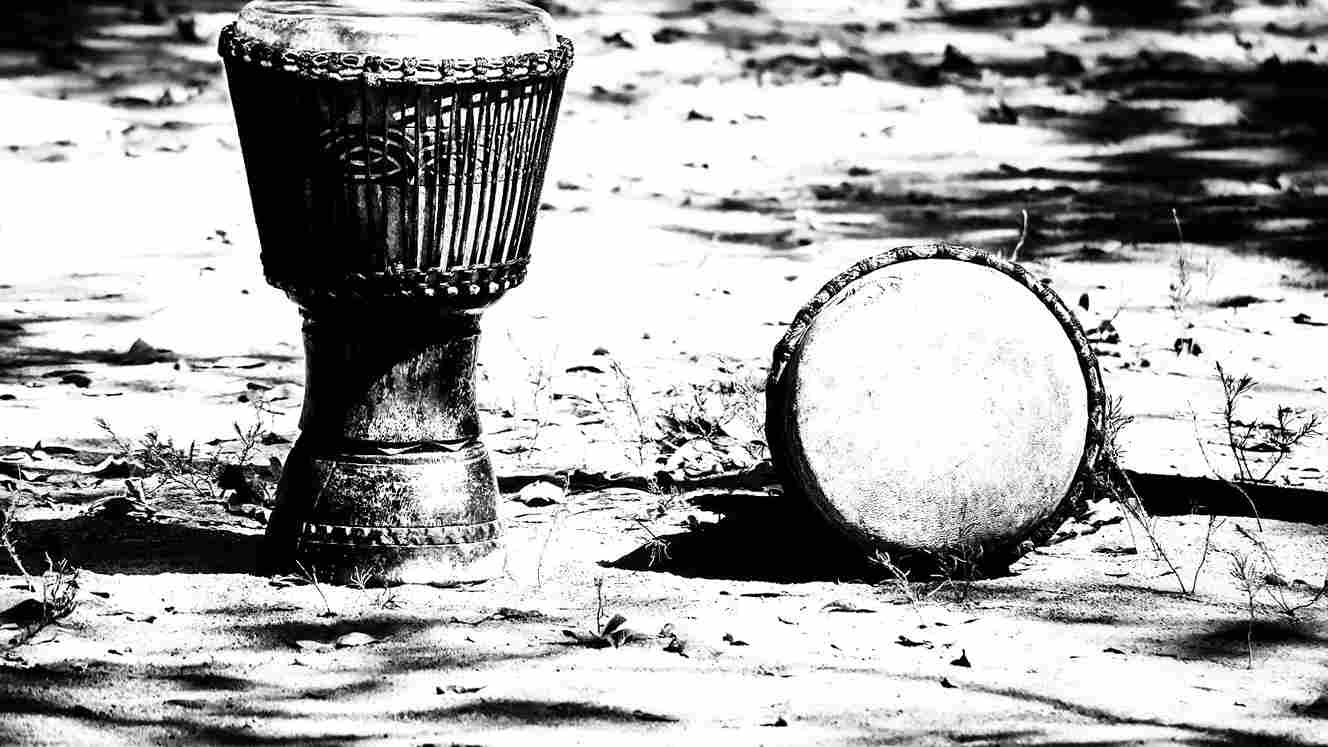
And it produces sounds similar to the following:
There also other percussion instruments like:
In the context of music production, we have this percussion groove:

And this percussion groove would sound like:
In conclusion, percussions are far more than just instruments; they are vital building blocks that inject life, energy, and character into music. Their ability to shape rhythm, texture, dynamics, and emotion makes them essential tools for musicians and producers across all genres, offering a universe of sounds waiting to be explored and creatively expressed.
Cymbals
Cymbals, such as the ride cymbal, crash cymbal, and splash cymbal, provide accents, crashes, and shimmering textures to the drum kit. They add dynamics, drama, and punctuation to the rhythm section, enhancing the overall feel and expression of the drum pattern.
In the grand orchestra of music, cymbals play a crucial role, acting as the dramatic punctuation marks, the energizing accents, and the shimmering highlights that elevate a composition from ordinary to extraordinary. Imagine a thrilling movie scene without the crashing cymbal at the climax, or a joyous celebration without the clanging of celebratory cymbals – their absence would leave a noticeable void. Here's a closer look at the multifaceted roles of cymbals:
Accenting and punctuating:
- Dramatic impact: The most iconic role of cymbals is their ability to create powerful accents and punctuations. A well-timed crash cymbal can mark the climax of a musical phrase, heighten tension, or add a burst of energy.
- Dynamic contrast: Cymbals help build dynamic contrast in music by providing sharp, high-pitched sounds that cut through the lower frequencies of other instruments. This contrast adds excitement and keeps the listener engaged.
Shaping the groove and rhythm:
- Rhythmic foundation: While not the primary rhythmic drivers, cymbals can contribute to the overall groove and rhythm of the music. Hi-hat cymbals, for example, provide a steady, ticking pulse that complements the kick drum and snare.
- Rhythmic variations: Ride cymbals offer more flexibility, allowing for rhythmic variations and fills that add interest and complexity to the groove.
Adding color and texture:
- Tonal diversity: Cymbals come in a variety of sizes and materials, each producing a unique timbre and texture. From the bright, piercing ping of a small splash cymbal to the deep, resonant boom of a large gong, cymbals add a rich sonic palette to the music.
- Creating atmosphere: Different cymbals can evoke specific atmospheres and moods. For example, a shimmering, sustained ride cymbal can create a sense of mystery or suspense, while a trashy crash cymbal can add a raw, aggressive edge.
Genre-defining identity:
- Genre signatures: The type and playing style of cymbals often play a significant role in defining the sound and identity of a particular genre. Rock music, for example, heavily utilizes crashing cymbals to create energy and power, while jazz drummers might favor subtler cymbal work with emphasis on texture and accents.
So a cymbal instrument would sound like below:
For example in the context of music production, the following ride cymbal groove adds a nice color and texture:

The ride cymbal groove would sound like:
In essence, cymbals are much more than just loud bangs and crashes. They are versatile instruments that add depth, dimension, and excitement to music across all genres. Their ability to accentuate, color, and punctuate a musical journey makes them essential tools for musicians and producers, forever shaping the emotional impact and dynamic flow of countless songs.
Toms
Toms are pitched drums that add melodic and tonal elements to the drum kit. They come in different sizes and produce different pitches. Toms are often used for fills, transitions, and dynamic accents, adding depth and texture to the drum pattern.
Toms, also known as tom-toms, play a multifaceted role in music production, adding rhythmic variety, textural depth, and melodic accents to enhance the overall composition. Here's a breakdown of their key functions:
- Rhythmic Variety and Accents: Unlike the kick and snare, which typically maintain a steady pulse, toms offer rhythmic flexibility. They can play simple fills, complex patterns, or single accents, adding dynamic interest and punctuating specific moments in the music. Their different tunings create distinct pitches, allowing them to play melodic phrases, counterpoint lines, or rhythmic variations that complement the main groove.
- Textural Depth and Dynamic Contrast: Toms contribute different timbres and textures compared to the kick and snare. Their larger sizes and broader frequency range offer warmer, rounder tones, creating a fuller sonic landscape. Producers can utilize this sonic diversity to build textural layers, transitioning from the sharp attack of the snare to the softer decay of a tom roll, generating dynamic contrast and keeping the rhythm engaging.
- Genre and Stylistic Identity: Different genres utilize toms in distinct ways. Rock and metal often showcase powerful tom fills and aggressive rolls, while funk and jazz might feature intricate, syncopated patterns. Country music might use toms for simple accents or fills with bluesy bends. The choice of tom sizes, tunings, and playing techniques significantly contribute to the sonic identity and stylistic cues of a song.
- Interplay with Other Instruments: Toms can interact with other instruments in the band or production, creating rhythmic and melodic interplay. They can provide counterpoint to guitar riffs, answer melodic motifs played by other instruments, or add emphasis to specific sections.
- Creative Explorations and Sound Design: Beyond traditional roles, toms can be creatively utilized for sound design purposes. Experimenting with tuning, damping, and different playing techniques can produce unique timbres, percussive elements, or even unconventional sound effects.
The tom drum produces sounds similar to the following:
For example in the context of music production, we have this tom fill:
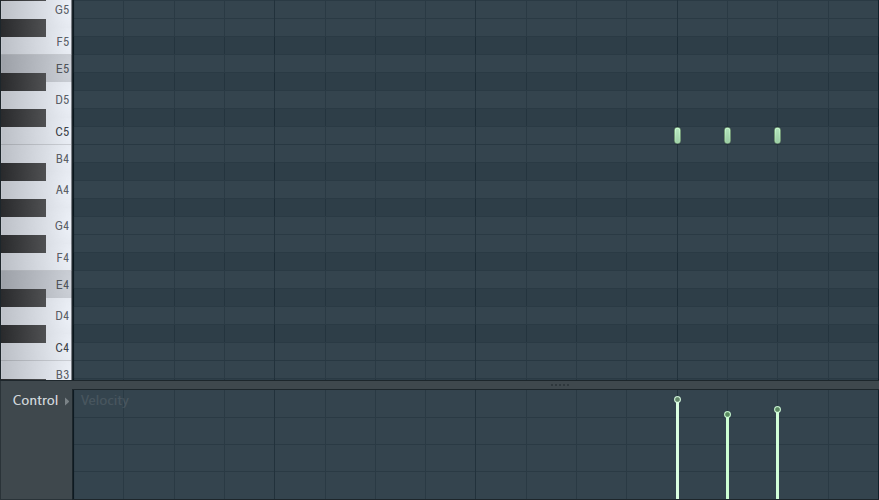
The tom fill would sound like:
In essence, toms are more than just "fill drums." They offer a versatile sonic palette, adding rhythmic character, textural depth, and dynamic contrast to various musical styles. Their potential for exploration and creative sound design further expands their role in the hands of skilled producers and musicians.
Drum Programming Techniques
Repetition is a powerful tool in creating catchiness and memorability in your sound design. Identify drum patterns that can be repeated throughout the composition, creating a sense of familiarity and recognition. However, also incorporate variations in the melody to keep it interesting and prevent it from becoming monotonous. Add embellishments, ornamentations, or slight variations in rhythm or phrasing to create moments of surprise and intrigue.
Step Programming
This method involves manually inputting each drum sound using a sequencer or drum machine interface, placing each sound on the desired beat or time slot.
Step programming offers a distinct approach:
Building Rhythms on a Grid: Imagine a grid, each square representing a time step. In step programming, you assign drum sounds to specific squares, building your rhythm one step at a time. This methodical approach offers:
- Precision: Perfect your rhythm to the exact step, ideal for creating tight, intricate patterns and complex polyrhythms.
- Visual clarity: See your entire rhythmic structure laid out visually, making editing and experimentation intuitive.
- Repeatability: Easily create identical or evolving patterns by copying, modifying, and chaining your step sequences.
Beyond the Static Grid: While step programming offers precision, it doesn't have to be rigid. You can:
- Apply swing: Introduce a swing feel to deviate from a perfectly strict grid, adding a human touch.
- Automate parameters: Automate effects like velocity, pitch, or pan over the steps, creating dynamic evolution within your patterns.
For example we have this second hi-hat groove on a Digital Audio Workstation (DAW) sequencer:

And the hi-hat groove would sound like:
Drum Pad Programming
Using a MIDI controller with drum pads, you can trigger drum sounds in real-time, capturing the nuances and dynamics of your performance.
Imagine capturing the raw energy and expressiveness of live drumming, but with the precision and flexibility of digital tools. That's what drum pad programming offers. Using a MIDI controller equipped with drum pads, you become a conductor, triggering individual drum sounds in real-time. Each hit on a pad translates into a digital signal, faithfully recording the nuances of your timing, velocity, and even ghost notes. This approach grants you immense control over dynamics and phrasing, allowing you to create intricate fills, dynamic swells, and realistic drum performances that pulsate with your unique style.
Loop-based Programming
Using pre-recorded drum loops or samples, you can assemble patterns by arranging and manipulating these loops to fit your composition.
While live performance offers undeniable authenticity, sometimes you need a solid rhythmic foundation to build upon. This is where loop-based programming shines. Imagine a treasure trove of pre-recorded drum loops and samples, meticulously crafted by professional drummers or sound designers. You can seamlessly import these loops into your digital audio workstation (DAW), slice them, rearrange them, and layer them to create unique grooves. Want a funky backbeat? Grab a loop with tight snare hits and a grooving hi-hat. Need a thunderous rock beat? Select a loop with powerful kicks and crashing cymbals. Loop-based programming streamlines the process, allowing you to experiment with different styles and find the perfect rhythmic bedrock for your composition.
Quantization
Quantization is the process of aligning the timing of drum sounds to a grid, correcting any timing discrepancies and ensuring a tight and consistent rhythm. However adding some little time offsets and imperfections can add a nice subte human touch to drum elements.
Now, imagine your drum performance is flawless, but there's just a hint of human imperfection – a slightly delayed snare hit or a hi-hat that lands just a touch off-beat. While these "imperfections" add character and realism, in certain musical contexts, precise timing might be paramount. This is where quantization steps in. It acts like a digital ruler, meticulously aligning the timing of your drum sounds to a predefined grid. This ensures a tight, consistent rhythm, perfect for electronic music, dance tracks, or situations where rhythmic precision is crucial. But remember, quantization isn't a one-size-fits-all solution. As the description hints, sometimes, strategically introducing slight timing offsets and imperfections can add a subtle human touch, keeping your drum parts feeling natural and expressive even within a quantized framework.
Humanization
Introducing subtle variations in timing, velocity, and groove can help you emulate the natural feel of a human drummer and add a sense of realism and groove to your programmed drum patterns.
While quantization can tighten up your drum tracks, it can also create a robotic, sterile feel. This is where humanization comes in. Imagine adding subtle timing variations, ghost notes, and flam hits to your programmed drums. These seemingly "imperfect" elements, inspired by the natural nuances of live drumming, breathe life into your tracks. You can achieve this by:
- Using swing: Introduce a slight swing feel by subtly delaying certain hits, creating a groove that dances instead of marches.
- Randomization: Apply subtle randomization to note timing and velocity, mimicking the natural variations in a live drummer's performance.
- Ghost notes: Add ghost notes, faint percussive hits, to create subtle fills and accents, adding depth and texture.
For example we have this second hi-hat groove playing a two step pattern but the velocities of the notes are not equal and there is a slight timing offset:

And the hi-hat groove would sound like:
Layering Drum Sounds
Layering involves combining multiple drum sounds to create a more complex and impactful sound. By layering different kick drum samples, snare drum samples, or adding additional percussion elements, you can achieve a thicker and more textured drum sound in your music. Experiment with blending different sounds, adjusting their levels, and processing them with effects to create unique and distinctive drum textures.
Imagine a single snare drum sound, now imagine layering it with different samples and effects. This is the magic of layering drum sounds. It allows you to create rich, complex textures that would be impossible with a single sample. Here are some exciting layering possibilities:
- Layering kicks: Combine a punchy kick with a sub-kick for low-end power and a clicky sample for attack.
- Layering snares: Blend a tight snare with a looser, more organic sample to add depth and realism.
- Layering cymbals: Layer a bright crash cymbal with a darker, trashy cymbal for a more nuanced and complex crash sound.
In the context of music production, instruments like the snare drums can be layered to enable them to cut through the mix a bit more:

The snare groove would sound like:
And a snare rim groove layer playing in the same pattern would sound like:
The two snare grooves when layered would sound like:
Sound Design and Processing
Sound design and processing techniques can further enhance the drum sounds in your programming. Experiment with equalization (EQ), compression, saturation, reverb, and other effects to shape the tonal qualities, dynamics, and spatial characteristics of your drum sounds. Processing can help your drum tracks sit well within the mix and add depth, punch, and clarity. We will delve deeper into this in the Mixing and Mastering blog.
